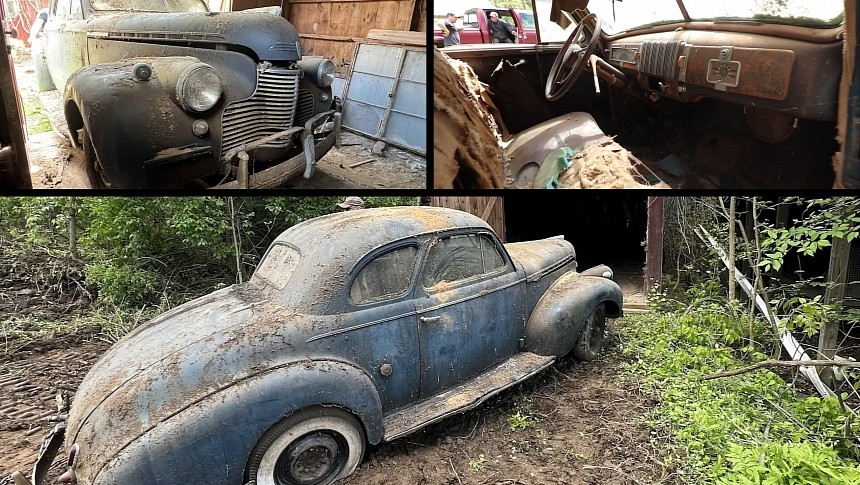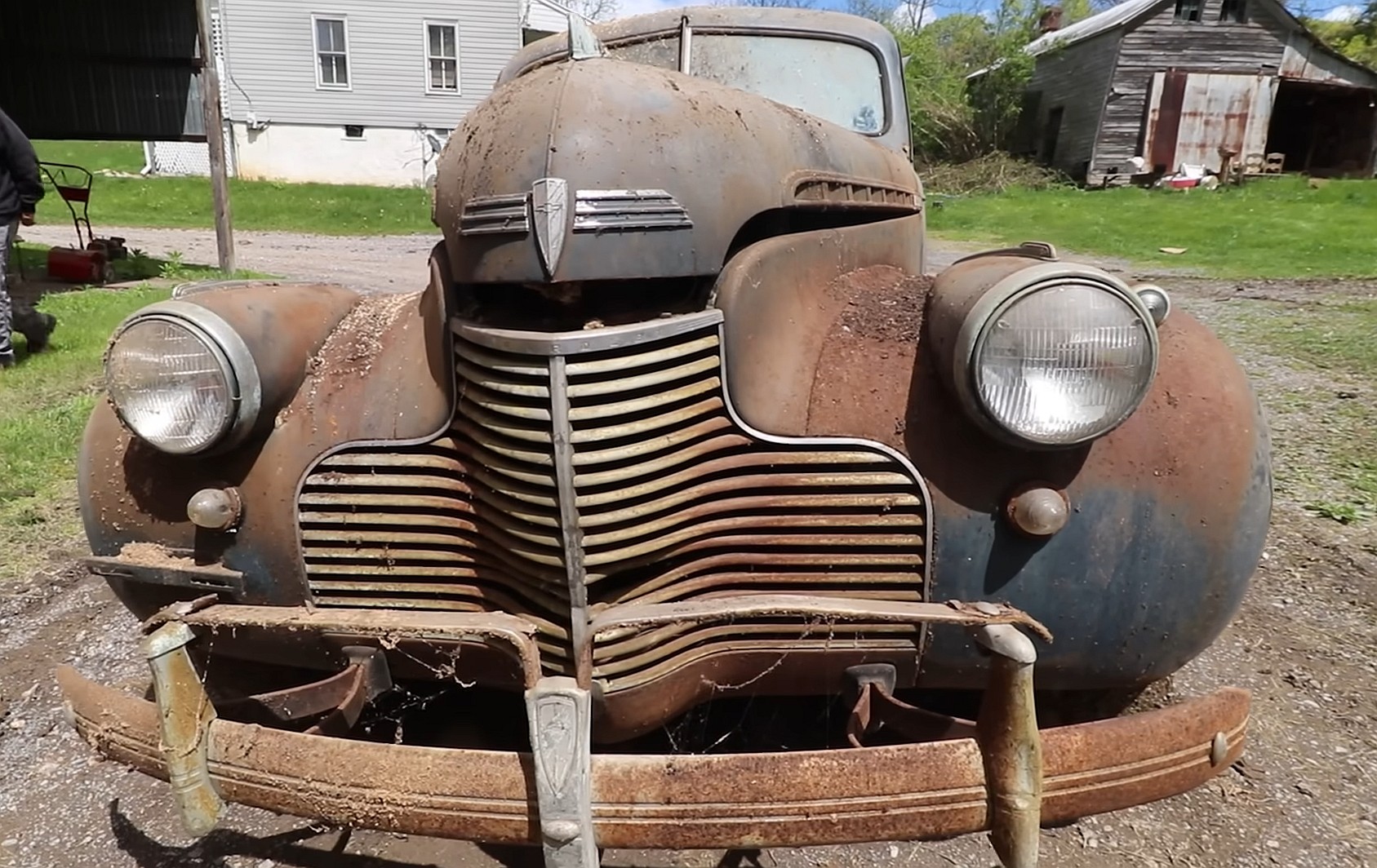
But I’ve seen a few exceptions that emerged into the light after some 50 years in hiding, still in one piece and totally restorable. What I haven’t seen until now is a 1940 Chevrolet still standing after a whopping 70 years in a collapsing barn. Amazing doesn’t even begin to cover it.
Uncovered by “IronTrap Garage” at an estate in Northern Pennsylvania, this 1940 Chevy, which is part of the Master series, was reportedly parked in the barn sometime in the 1950s. This means it was driven for less than 20 years before it was parked for approximately seven decades. What a sad faith for such a beautiful coupe, right?

And on top of spending more than a half-decade in a wooden barn, it also had to endure the pressure of several wood posts leaning on its fenders to sustain the collapsing roof. And as it usually happens when a car is left in an old barn, the Chevy became a home for several rodents. As a result, the seat upholstery is toast, while the trunk is packed with rat poop.
Of course, the exterior also shows some issues, including surface rust and rot holes, several dents, and a thick layer of dust and grime. But surprisingly enough, the car is still in one piece, and the body appears to be ready for a refresh without major metalwork. And the fact that all the trim is still in place is as amazing as it gets.
There’s good news under the hood as well, with the original engine still in position. It’s seen better days, though, and it appears as if it was partially dismantled at some point. That may be a sign that the Chevy was parked for mechanical reasons, and the owner never got around to fixing it.

Luckily, our host managed to drag the car out of the collapsing barn without inflicting further damage. And the good news is that it will be auctioned off alongside other vehicles found on the property. Hopefully, someone will buy it as a restoration project, and it won’t end up as a parts donor. Because this pretty coupe still has plenty of life left in it, at least as a hot rod with a modern Chevrolet small-block V8 under the hood.
If you’re unfamiliar with the 1940 Chevrolet, it’s part of the Master series that the company built from 1933 to 1942. The 1940 version is also known as the series KA and KB. The latter was used to designate the base Master model, while the former code was applied to the more upscale Master Deluxe. 1940 also saw the introduction of an even better-equipped version called the Special Deluxe.
Chevrolet offered the Master in various body styles, all featuring a 113-inch (2,870-mm) wheelbase and powered by a 206-cubic-inch (3.4-liter) inline-six engine rated at 85 horsepower. The Master is not particularly valuable nowadays, but they’re getting increasingly harder to find in unrestored condition. And that’s precisely why this two-door coupe is worth saving. Check it out in the video below.
